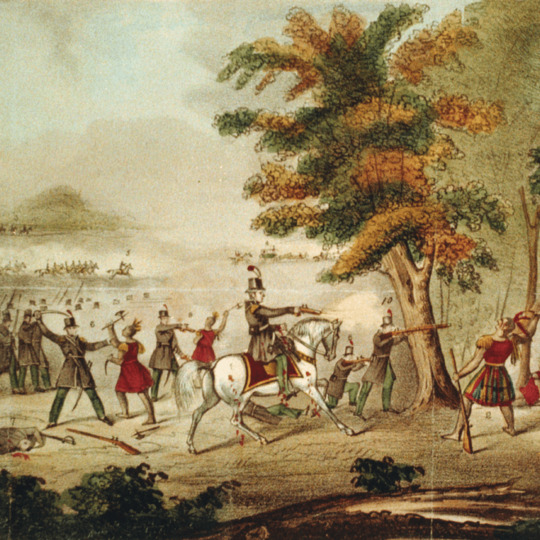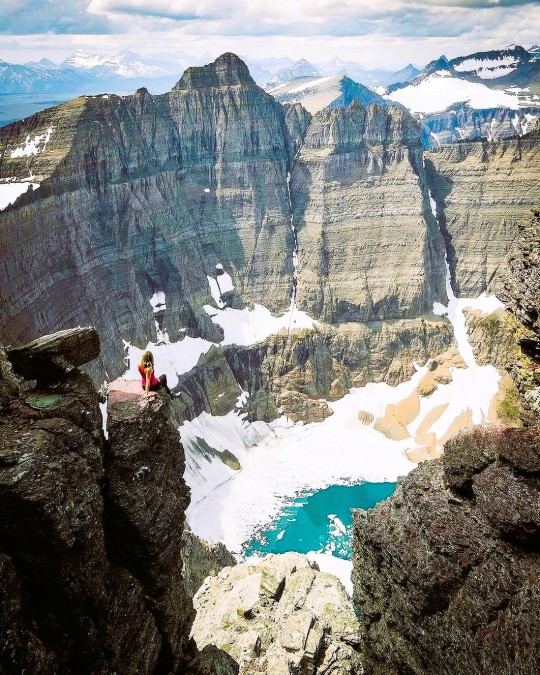#northwestern united states
Explore tagged Tumblr posts
Text

La Push, Washington
24 notes
·
View notes
Text
Puppy’s special chair saves his life
Puppy’s special chair saves his life Elijah, a pup in Idaho, was suffering from severe malnutrition because of a “vascular ring anomaly,” but thanks to some creative doctors he’s now living a life fit for a king. Source link
#cardiovascular disease#diet#diet and nutrition#diseases and disorders#health and medical#idaho#malnutrition#north america#northwestern united states#nutrition and fitness#United States
0 notes
Text

"There is high confidence in a dangerous heat wave in the Pacific Northwest. Locations in the interior valleys and lower elevations of western Oregon could see one of their hottest five-day stretches on record (by average temperature), with 100+ degree highs likely." - NOAA Weather Prediction Center
#NOAA Weather Prediction Center#NW US Heat Wave#Northwestern United States#Major Heat Wave#NOAA#National Weather Service
0 notes
Text
Looking up the Cato family on Wikipedia and

why did Romans do this. How does anyone tell each other apart. Cato the Younger my shapely ass, more like Marcus Porcius Cato friggin Septimus, learn some fucking originality my dudes!!
#ancient rome#cato the elder#cato the younger#cato the ever-expanding list of catos#cato the seattle polycule taking over the northwestern united states#romeposting
14 notes
·
View notes
Text
For example, Courtney voted in favor of the Antisemitism Awareness Act earlier this month, which assists the Education Department with identifying Title VI-related civil-rights violations concerning anti-Semitism on campus. Courtney, then, can at least lay claim to consistency. Not so Bonamici and Scott, who voted against the Antisemitism Awareness Act.
Whatever Bonamici and Scott are worried about, it isn’t Title VI enforcement. In fact, responding to a plea for civil rights enforcement from Jewish students by demanding more cash has a certain “Your money or your life” ring to it. Is this a protection racket?
Bonamici is particularly hostile to doing her job. Instead of having hearings and investigating the problem, she wants Congress to “work with experts on anti-Semitism, legal scholars with expertise in the area, people knowledgeable in the field who can help us determine what the government response can and should be to the increase in anti-Semitism and racial hostility on campuses.”
First of all, the “anti-Semitism and” does not go unnoticed there. Second, “anti-Semitism experts” already told you what to do about it. They said vote for the Antisemitism Awareness Act. You, Suzanne Bonamici, chose not to follow their advice. Third, the “government response” is to hold these hearings as part of their investigative process. Suzanne Bonamici may not be doing very much with her time, but committee chair Rep. Virginia Foxx (R-N.C.) has been pairing the hearings with a comprehensive document dive to find out what has been going on at these campuses for years now, and those investigations have informed the subsequent hearings.
“Give us more money” is not an answer here. Neither is anything called “the anti-Semitism police.” Universities are teaching their students blood libels and then encouraging those same students’ physical expression of that anti-Semitism. They are doing so with public money. If that doesn’t bother you, you might be morally unfit to serve in Congress. If it bothers you that it bothers others, the areas of public life for which you are morally unfit expands exponentially.
by Seth Mandel
Now that university presidents have learned how to respond to members of Congress without digging themselves into a public-relations hole, the lawmakers’ own statements will stand out a bit more. And one talking point that has cropped up among Democrats reveals both a misunderstanding of how to combat anti-Semitism and a desire to pass the buck.
At Thursday’s hearing, which focused on Rutgers, UCLA, and Northwestern, some lawmakers continued a line of argument they had used in previous hearings: that anti-Semitism is happening on these campuses because the federal government doesn’t have enough money to stop it. It’s a preposterous claim, but since it’s become a regular talking point it’s worth calling out before it catches on further.
“The civil rights division of the Department of Education just reported in 2023 they had a record number of complaints for the department,” intoned Rep. Joe Courtney (D-Conn.). “If you go back to 2009, it’s tripled in terms of the number of complaints—and a lot of those complaints involve anti-Semitism. But the staffing level at the civil rights division of the U.S. Department of Education back in 2009 [was] larger than it is today.”
Courtney then echoed his colleague Rep. Bobby Scott of Virginia and accused Republicans of trying to cut that division’s budget, “which I would characterize as the equivalent of defunding the anti-Semitism police. I think it’s our job at some point to focus on the fact that we need to beef up the ranks of that department whose mission it is to investigate and to curtail this type of activity.”
This is an almost-clever play on “defund the police,” the slogan that divided Democrats during and after the George Floyd demonstrations. But it is marred by the instant recoiling one cannot help but feel toward the dreadful phrase “anti-Semitism police.”
Three makes a trend, and Suzanne Bonamici (D-Oregon) joined the chorus. “Because this is also a Title VI issue, let’s focus as ranking member Scott and Rep. Courtney said, on equipping the office of civil rights with the resources that it needs rather than cutting their budget.”
Scott and Bonamici both gave quite contemptible performances, complaining about holding the hearings (i.e., doing their job) while remaining militantly unwilling to condemn anti-Semitism without diluting it with “and Islamophobia.” Courtney, however, seemed to be acting in good faith.
#Rutgers University#UCLA#Northwestern University#college#Anti Semitism#Israel#United States#Suzanne Bonamici#Bobby Scott#Joe Courtney
12 notes
·
View notes
Note
i keep reading conflicting info about this so i figured i’d ask someone who definitely knows more than me about linguistics— is vocal fry actually bad for your health? if i understand correctly, it’s a characteristic of some accents, and i hear it pretty often in the pacific northwestern united states (where i live), so i’m curious if it can actually damage your voice.
oh wow, i'd forgotten about this part of the 2010s vocal fry fixation. it looks like yeah, vocal fry can result in damage to the vocal folds (be warned for images of actual vocal folds at that link and a prolonged sound of vocal fry in the video). it's an overuse injury from moving the vocal folds in a way they're not designed to sustain for long periods. i can't find anything on whether typical vocal fry use in daily speech is likely to result in that kind of damage, though.
289 notes
·
View notes
Text

Northwestern Ring-necked Snake (Diadophis punctatus occidentalis), family Colubridae, NW United States
Photograph by Sara Salamander Viernum
379 notes
·
View notes
Note
If someone, hypothetically, were to paint some miniatures based on the "Holy Dominion of Northwestern Iowa", what colors and kinds of symbology would they potentially use 👀
okay so can I just say that as a lorebrained vexillology dweeb you have given me such a beautiful gift. Ideas that immediately come to mind:
Overarching colors
Red, to represent military valor and The Passion, but never alongside white or blue. The Heptarchate is part of the "post-American" movement within the former United States, rather than one of the polities seeking legitimacy via translatio imperii.
Gold, representing prosperity and ambition; the state's (relatively) bountiful supply of wheat and maize; and the glory of God.
Pale pink or lavender, representing love, temperance, and the Prairie Rose, unofficial flower of the now-defunct United State of Iowa.
Orange, drawn from the founders' (questionable, New-Agey) understanding of Buddhist monasticism. Symbolically, it represents joy; brown, which is essentially a darker shade of orange, may be used to represent trees or fertile soil.
Specific symbols
BROKEN WHEELS. An end to cycles both mundane and metaphysical; a testament to the Palatinate's effectiveness in repelling and pacifying road-warriors.
SUNRISE AND SUNSET. Naturally unifies all the aforementioned colors. Seen as the "successor" to Noah's rainbow - a symbol of God's pledge that the strife of the 22nd century was over, and that humanity would endure.
CROWNS, in particular A CROWNED DOVE, representing the unchallenged authority of God and his earthly representatives, i.e., the Heptarchs themselves. (The Dove is one of the few exceptions to the "don't put white next to red" rule.)
Additionally, families, monasteries, and social organizations - regardless of wealth or social standing - will often have their own crests or coats of arms that contain more unique, personal symbolism.
Such crests will almost invariably include a "Fursona" (untranslatable), an animal meant to represent that group's values and virtues; often, a family's name is derived from its crest rather than vice versa. For example, Lavender's family - the Spadeharts - were so rechristened in the 2130s, being gardeners and farmers who sought to embody the cervine virtues of Meekness, Temperance, Kindness, and Discretion.
63 notes
·
View notes
Text
i should draw something with them either cloudwatching together or sitting somewhere safe and observing a storm from a distance

even tho fairies have more difficulty flying with wet wings adelitas favorite kind of weather is thunderstorms cause her beautiful fiancée’s job is to ensure the yearly monsoon season and she started to observe the weather more often after they started dating
#crow.txt#ocposting#fairies#adecinta#the north american monsoon is such a fascinating phenomenon to me#the majority of english language coverage online of it focuses on the parts that are in the united states#but its strongest in northwestern mexico
6 notes
·
View notes
Text

May 28, 2024 - White-crowned Sparrow (Zonotrichia leucophrys) Requested by: @novathekeet23 Breeding in northern Canada, Alaska, and parts of the northwestern United States, these sparrows winter in much of the continental US and Mexico. They eat seeds, buds, grass, fruit, and arthropods, picking food items from the ground or plants and capturing insects in short flights. Nesting in shrubs or on the ground, females build cups from twigs, grass, pine needles, moss, bark, dry leaves, and hair. They incubate clutches of three to seven eggs alone but both parents feed the chicks.
#white crowned sparrow#sparrow#zonotrichia leucophrys#bird#birds#illustration#art#grassland#requests#birblr art
109 notes
·
View notes
Text
Glacier National Park, Montana, United States: Glacier National Park is an American national park located in northwestern Montana, on the Canada–United States border, adjacent to Waterton Lakes National Park in Canada—the two parks are known as the Waterton-Glacier International Peace Park. Wikipedia
69 notes
·
View notes
Text

Glacier National Park, Montana, United States: Glacier National Park is an American national park located in northwestern Montana, on the Canada–United States border, adjacent to Waterton Lakes National Park in Canada—the two parks are known as the Waterton-Glacier International Peace Park. Wikipedia
87 notes
·
View notes
Photo

Battle of the Thames
The Battle of the Thames (5 October 1813), or the Battle of Moraviantown, was a decisive engagement in the War of 1812, in which a US army under General William Henry Harrison defeated a British and Native American force in Upper Canada. The battle resulted in the death of the Shawnee chieftain Tecumseh and the dissolution of his intertribal confederacy.
Battle of the Thames
William Emmons (Public Domain)
Background: The Struggle for Michigan
On 16 August 1812, less than two months after the War of 1812 had been declared, the British captured the major US outpost of Fort Detroit without a fight, giving them control of the entire Michigan Territory. This decisive victory could not have been achieved without the help of several northwestern Native American nations, who had sided with the British in order to resist the aggressive westward expansion of the United States. Under the charismatic leadership of the Shawnee chieftain Tecumseh, these Native American nations were in the process of joining together in a new intertribal confederacy, with the goal of recovering lands they had lost to the US after the disastrous Battle of Fallen Timbers (20 August 1794). Britain was eager to support this new confederacy, viewing it as a potential buffer state between the US and Canada, and promised to help set up the Native Americans on lands west of the Ohio River.
The United States, anxious as it was to prevent a hostile, British-backed Native American confederacy from arising on its western frontier, was determined to nip the threat in the bud by reconquering Michigan. This task was allotted to Major General William Henry Harrison, the popular hero of the Battle of Tippecanoe, and his newly formed Army of the Northwest, comprised mainly of volunteers from Kentucky and Ohio. In early October 1812, Harrison set out towards Detroit, but his progress was hindered by poor logistics and bad weather. Forced into winter quarters by January 1813, Harrison faced additional difficulties when the leading column of his army – at the small settlement of Frenchtown, Michigan, on the River Raisin – was attacked and defeated by a British and Native American force. After the battle, the British soldiers withdrew to Detroit, taking their able-bodied captives but leaving behind those Kentuckian prisoners who were too wounded to walk. When night fell, many of these wounded Kentuckians were massacred by Potawatomi warriors allied with the British, who desired vengeance for their villages that had been burned by Harrison's army during its advance through Ohio.
Harrison, upon learning of the defeat at the Battle of the River Raisin, withdrew the rest of his army to the Maumee River, where he hastily built Fort Meigs in February 1813. For the next several months, the Army of the Northwest remained holed up in the fort, even withstanding a brief siege in May. Before he could continue his advance toward Detroit, Harrison knew that the Americans needed to gain control of Lake Erie; possession of the lake would allow them to more easily reinforce and resupply their army in Michigan. With this goal in mind, the Americans built nine vessels on the lake, which were placed under the overall command of Master Commandant Oliver Hazard Perry.
The Battle of Lake Erie
Julian Oliver Davidson (Public Domain)
In late August, Perry moved his naval squadron to Put-in-Bay, Ohio, a position from which he could blockade the main British outpost along the lake, at Amherstburg in Upper Canada (present-day Southern Ontario). A squadron of six British ships, under Robert Heriot Barclay, sailed out to meet this threat, culminating in the Battle of Lake Erie (10 September 1813), in which Perry prevailed, capturing the British vessels; as Perry himself would put it in his report to Harrison, "We have met the enemy and they are ours." With the Americans in control of Lake Erie, Harrison was free to resume his advance toward Detroit. In mid-September, his army marched into Michigan along the lakeshore, supplied by Perry's victorious ships in the lake.
Continue reading...
30 notes
·
View notes
Text


Anaphalis margaritacea (Western pearly everlasting)
There are over 100 species of Anaphalis but only Anaphalis margaritacea is native to North America. It is widespread across most of Canada, the United States and Northwestern Mexico. This species also has native, wild populations throughout Europe and the the Far East. This healthy specimen was found growing on an empty building site. Just what this plant loves: full sun and poor soil.
Western pearly everlasting is dioecious, meaning that the pollen-producing (male) and seed-producing (female) flowers are borne on separate plants. The flowers are either entirely staminate (producing pollen) or functionally pistillate (mostly producing just seed, but with a few staminate flowers present). Thus the female flowers have a brilliant 'back-up plan' which ensures that, even if there are no male plants in the vicinity, there is still a way to produce the next generation of Western pearly everlasting.
#flowers#photographers on tumblr#pearly everlasting#native plants#dried flower arrangements#fleurs#flores#fiori#blumen#bloemen#Vancouver
105 notes
·
View notes
Text

Glacier National Park, Montana, United States: Glacier National Park is an American national park located in northwestern Montana, on the Canada–United States border, adjacent to Waterton Lakes National Park in Canada—the two parks are known as the Waterton-Glacier International Peace Park. Wikipedia
127 notes
·
View notes
Text

Honiara, Solomon Islands: Honiara is the capital and largest city of Solomon Islands, situated on the northwestern coast of Guadalcanal. The city is served by Honiara International Airport and the seaport of Point Cruz, and lies along the Kukum Highway. The airport area to the east of Honiara was the site of a battle between the United States and the Japanese during the Guadalcanal Campaign in World War II, the Battle of Henderson Field of 1942, from which the former emerged victorious. Wikipedia
93 notes
·
View notes